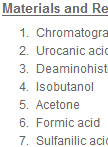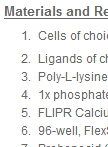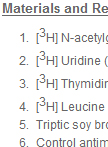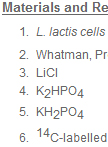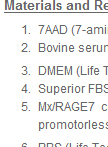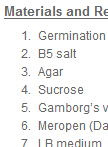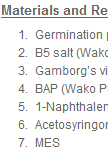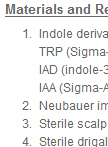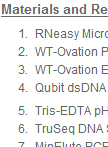- Protocols
- Articles and Issues
- About
- Become a Reviewer
Past Issue in 2013
Volume: 3, Issue: 12
Biochemistry
Paper Chromatography as Exemplified by Separation of Urocanic Acid and Deaminohistidine
Cell Biology
Calcium Mobilization Assay to Measure the Activity of Gq-coupled Receptors
LC3B Labeling on Terrestrial Isopod Adipocytes
Developmental Biology
Labeling of Precursor Granule Cells in the Cerebellum by ex vivo Electroporation
Microbiology
Macromolecular Biosynthesis Assay for Evaluation of Influence of an Antimicrobial on the Synthesis of Macromolecules
EdU labeling of Trypanosome Cells and Their Kinetoplast DNA (kDNA)
IFN-α Inhibition Assay in vitro
Amino Acid Transport Assays in Resting Cells of Lactococcus lactis
Measurement of IFN-α Subtype Concentrations (Virus-free, Cell-based Bioassay)
Molecular Biology
Structural Based Strategy for Predicting Transcription Factor Binding Sites
Plant Science
Hairy Root Transformation in Lotus japonicus
Stable Transformation in Lotus japonicus
Growth Assay and Detection of TRP and Indole Derivatives in Piriformospora indica Culture Supernatant by LC-MS/MS
Indole Derivative Feeding Test and Detection of TRP and Indole derivatives by Thin Layer Chromatography
Systems Biology
RNA-Seq Library Generation from Rare Human Cells Isolated by FACS


